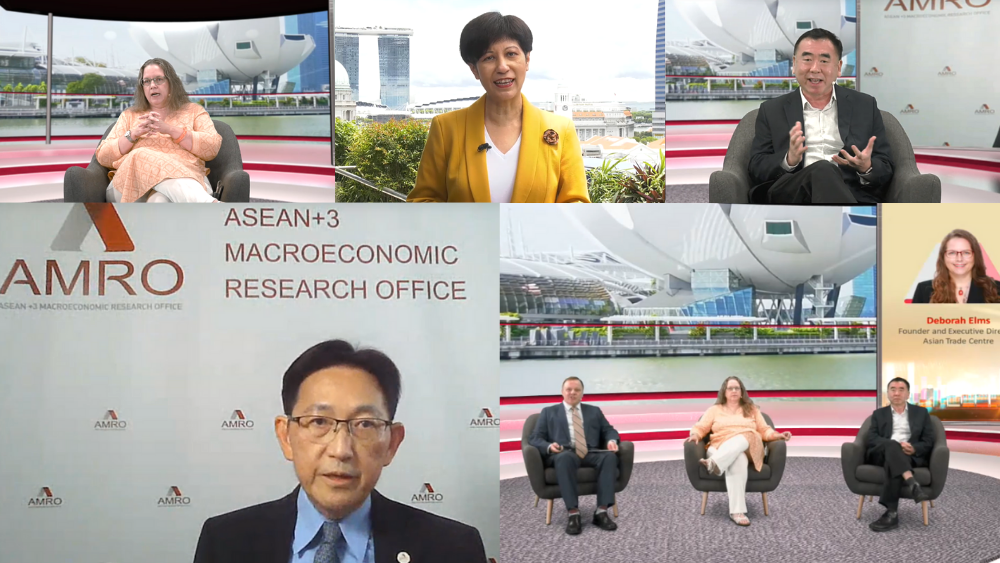
(Bottom row from L to R): AMRO Chief Economist Dr Hoe Ee Khor, Glenn van Zutphen, Deborah Elms, and Denis Hew
SINGAPORE, April 7 – Stronger connectivity in the region will boost the key role the Asean+3 region plays in the global value chain (GVC), as interdependence rather than independence will provide greater diversity and resilience to the GVC, said Minister in the Prime Minister’s Office of Singapore, Indranee Rajah today.
In her opening address at a webinar – Global Value Chains in the Post-Pandemic “New Normal” Indranee, who is also Singapore Second Minister for Finance and National Development said the region remained a key part of the global supply chain amid the COVID-19 pandemic.
She noted that how at the onset of the pandemic, several economies in the region issued a joint ministerial statement on supply chain connectivity to reaffirm their commitment to maintain open and connected supply chain.
Participation in regional free trade agreements such as the Regional Comprehensive Economic Partnership (RCEP) will also help, she said, adding that she was looking forward to the early ratification of the RCEP.
At the webinar, Dr.Hoe Ee Khor, AMRO Chief Economist, presented the highlights of AMRO’s annual report, ASEAN+3 Regional Economic Outlook, and he was joined by Deborah Elms, Founder and Executive Director of the Asian Trade Centre and Dr. Denis Hew, Director of Policy Support Unit in Asia-Pacific Economic Cooperation joined the discussion.
Digitalisation, the vulnerabilities as well as the strengths of GVCs and its reconfiguration in the face of challenges came into focus at the webinar organised by the Asean+3 Macroeconomic Research Officer (AMRO).
Pointing out the disrupted supply chains during the pandemic induced lockdowns, the speakers spoke on how technologies will continue to shape the GVCs, and that policy makers should continue to play a role in facilitating digitalisation across the region to increase its competitiveness.
These should include building enabling infrastructures to benefit from the 4th Industrial Revolution as well as strengthening global and regional frameworks to promote greater integration. ,
To a question on whether there will be a major relocation of GVCs in the region, Dr. Khor said: “Although we have seen some cross-border relocation of GVCs globally, the Asean+3 region will remain a highly attractive location of GVC investment in the post-pandemic world.”
The speakers also spoke of the ongoing tech tension between the US and China and its possible effects on the region. One concern raised was that of bifurcation, with China and the US advancing their technologies separately and creating devices that may not communicate with each other.
“However, this can be mitigated with interface technologies,” said Dr. Khor.
–WE